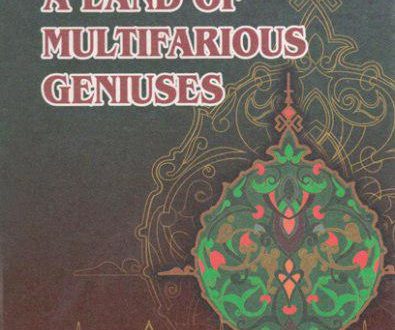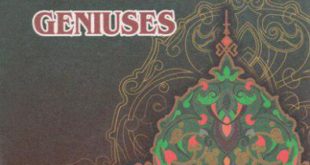The life of Abu-l-Muin an-Nasafi
Most of the authors who wrote about the life and career of Abu-l-Muin an-Nasafi give the full name of the scholar as Abu-l-Muin Maymun ibn Muhammad ibn Muhammad ibn Mu’tamid ibn Muhammad Makhul an-Nasafi. There are some other versions of his full name in some other sources but his shortened family name is mentioned everywhere as Abu-l-Muin an-Nasafi. Moreover, he had also some titles of honour like “Imam fazil” (the wisest Imam), “Sayfu-l-haq” (a sword of the truth), “Jomi’ al-usul” (master of style), “Al-imam az-zahid” (imam of the faithful), “Al-faqih al-Hanafi” (a lawyer of the Hanafian order), “Al-alim al-bari” (a scholar of the highest knowledge). Abu-l-Muin an-Nasafi was born and brought up in the family of well-educated parents. Most of his ancestors and relatives were engaged in the Muslim law and had good fame and knowledge in this field. His grandfather Makhul Abul Fazl an-Nasafi was an acknowledged scholar of his time and the leader of the Nasafi dynasty. His family were the disciples of the founder of the Hanafian order Abu Hanifa and the followers of his teachings. He used to cite Hadiths from Abu Sulayman Juzjani who was a colleague and contemporary of Muhammad ibn al-Hasan ash-Shaybani. The historians consider that he lived for a short period of time in Samarkand and spent the rest of his life permanently in Bukhara.
As to the date of birth of Abu-l-Muin an-Nasafi, the author of the book “Al-A’lam” Khayriddin az-Zirikli and the author of the book “Mu’jal al-muallifin” Umar Riza Kahhala wrote that Abu-l-Muin an-Nasafi was born in 418/1027 in Nasaf (modern Karshi). As to his date of death, the sources provide the date 508/1114. According to these data,Abu-l-Muin an-Nasafi seems to have lived 87 years. His was buried in the graveyard situated in Qovchin village which is not far from Karshi.
The teachers and Masters of Abu-l-Muin an-Nasafi
We could not find suitable information about the teachers and masters of Abu-l-Muin an-Nasafi. The only information provided in the book “Kitab al-alim va-l-mutaallim” (A book of masters and students) by Abu Muqatil as-Samarqandi (died in 208/823) says that the Hadiths presented by Abu-l-Muin an-Nasafi in his books were cited from his father Muhammad. This fact shows that Abu-1-Muin’s father Muhammad ibn Mu’tamid had good scientific potential to be a teacher for his beloved son. Other sources do not contain information about his scholarly potential. Despite this fact, the representatives of the Nasafi dynasty had good authority among public on the legal matters of Islam, especially on the legal problems of the Hanafian order. Abu-l-Muin’s great (the fourth) grandfather Abu Muin Makhul ibn al-Fazl an-Nasafi was known as an author of a number of books, Yahya ibn Muaz (died in Nishapur in 258/ 871) and the founder of the “al-karramiya school” Abu Abdullah Muhammad ibn Karram’s disciple. He used to study Hadiths from such well-known experts in the science of Hadiths as Abu Isa at-Termizi, Muhammad ibn Ayyub ar-Razi, Abdullah ibn Ahmad ibn Hanbal and others. He was also Abu Sulayman az-Juzjani’s disciple and was cited in the works of his son Abu-l-Muin Muhammad ibn Makhul. He was one of the fourth level lawyers of the Hanafian order. There was a book belonging to his pen “Ash-shua in fiqh (law)” in which Abu Hanifa’s idea about the cases destroying the prayer was mentioned, for example: “if anyone raises his hands together with his head from the praying carpet, so is his prayer considered to be invalid”. He had also some more books as “Al-Lu’lu’iyat” dealing with ma’vizas, “Al-Lubab” having to do with the peculiarities of Allah, “Kitab fi-t-tasawuf” describing the principles of social life and “Radd a’la ahl al-bida’ va-l-ahva” devoted to the description of religious matters. Although Abu-1 Muin’s fourth grand-
father Makhul an-Nasafi died in 318/930, his third grandfather Abu-l-Muin Muhammad ibn Makhul used to cite Hadiths in his works from his father Makhul.
Thus relying on the facts mentioned above, we can conclude that the family members of Abu-l-Muin were well-educated people in the field of the Hanafian order and paid necessary attention to the education of their children. His ancestors were teachers and educators for Abu-l-Muin an-Nasafi.
 Imom Buxoriy xalqaro ilmiy-tadqiqot markazi bukhari.uz
Imom Buxoriy xalqaro ilmiy-tadqiqot markazi bukhari.uz











